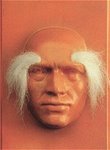
There a quite a few chin-stroking veterans of the poker circuit who like to tell you that it is possible to learn a lot about life from time at the table.
They tend to be the kind of people who, whatever situation they find themselves in, think they could write a book about it.
Whilst not denying there are certainly lessons to be learned at the table, they are almost solely about individual character and are not the kind of life changing moments that will leave you face up in a field, staring at the heavens with a boosted sense of wonder.
In some ways, the lessons you learn at the table can be the opposite to those picked up in the school of life.
Take social learning theory.
It was developed to explain how people learn behaviour and it proposes that there is a tendency to do it through imitation. There are four main stages:
Close contact
Imitation of superiors
Understanding of concepts
Role model behaviour
For example, let’s say you find yourself at a high class, multi course dinner in Monaco and you are set at a large table. The food is yet to arrive but in front of you is a bamboozling range of cutlery. It’s all neatly ordered and you haven’t the foggiest whether it is for prodding, scooping or slicing.
So, what do you do?
Well, according to social learning theory, you look for the nearest fawning prat in a comfort zone and, when the bouillabaisse arrives, you copy what he does. In theory, this should limit the chances of losing face by accidently lifting the lemon de-zester.
For dinner parties, social learning theory is the equivalent of an experienced hand guiding you through a labyrinth of etiquette.
For poker, social learning is the equivalent of a pat on the back which turns out to be a slapped on ‘kick me’ sign.
It is all about context.
In the dinner party, the context is immediately obvious: it is to enjoy a fine meal whilst simultaneously demonstrating suitability for membership in an elite group.
At the poker table, the context is changing all the time and so, when the fish is served, there can be a range of different slicing devices.
It is very important to not mindlessly ape the style of successful players. Poker is too complex for that.
Take the style of Gus Hansen. He is one of the most aggressive, unpredictable players on the live poker circuit and is highly successful but if you or I were to mimic the way he plays, we’d be broke in days.
He (in most cases – let’s not go nuts) makes his decisions because he is attuned with the shifting patterns of the game and can read when it’s worth trying a quick slap on someone’s stack. It is fundamentally wrong to peek at your hole cards and say ‘Well, I’ve got 9-5 and I’ve seen Gus raise....’
It is the ‘too much TV’ syndrome.
Some players can forget that when they watch poker, it is a highly edited package which does not show the hours of mundane mucking that provides the context of Gus’ raising tactics.
Therefore, one of the lessons we have learned about life through our time flicking cards, is that it proves the theory that adaptability is the key to survival.
You can read the forthcoming book about it.
Each copy comes with a complimentary ground mat and telescope.


No comments:
Post a Comment